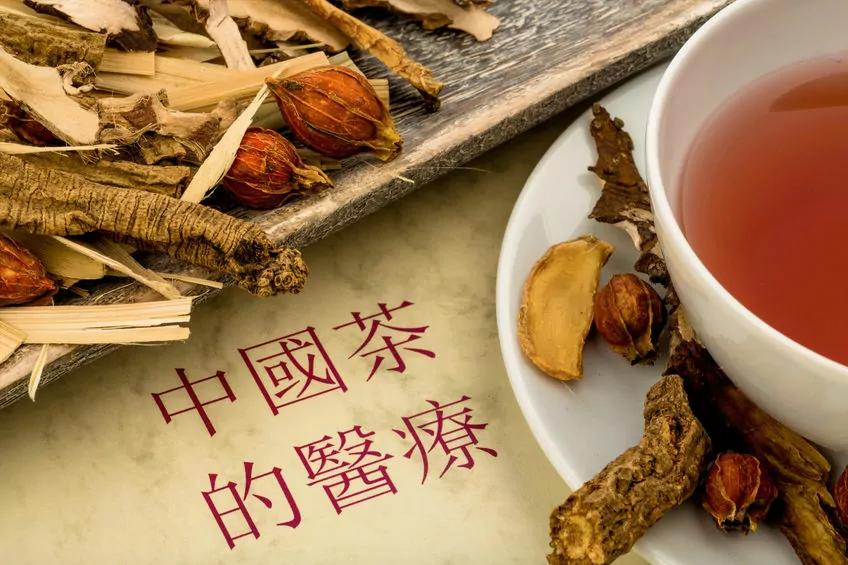
TCM has been used for thousands of years to treat a myriad of illnesses, including inner ear balance problems.
By Alice Rader R.D., CDE, Dr. P.H.
With the 2015 Nobel Prize in medicine being awarded on October 5 to Chinese researcher Youyou Tu for her innovative work using a Traditional Chinese Medicine approach, interest in functional herbal remedies has skyrocketed. As a complementary or alternate way to manage symptoms, TCM may offer significant benefits to people suffering from inner-ear balance disorders.
According to Xingwu Liu, Ph.D., an expert who specializes in traditional herbology from his headquarters in Chicago, “A specific functional formula intended to manage vertigo symptoms has been developed by the prestigious China Academy of Chinese Medical Sciences (CACMS) and is based on a traditional herbal preparation to brighten the senses.”
Today, incorporating the latest scientific research discoveries, CACMS has enhanced the conventional compound using additional extracts from astragalus root, pueraria root, seashore vitex, common peony root, cimicifuge, phellodendron, licorice, cimidium, Chinese angelica root (Dong Quai) and ginseng. The improved formula is widely used in eastern herbal medicine.
In TCM the medicinal or herbal remedy is typically prepared as a decoction blending different parts of plants — leaves, roots, stems, flowers and seeds — in formulas which are then administered as teas, capsules, liquid extracts, granules or powders. Dr. Liu explains that the formula components interact synergistically to potentiate the overall effect nourishing and activating the mind, the ears and the eyes overall while each one also has its own specific contribution:
- Astragalus, ginseng and licorice: to increase the vital energy and to promote healthy circulation to the inner ear
- Cimicifuge: to address disorders of the neck-head area and to strengthen the mind and senses
- Pueraria and vitex: to relieve ringing in the ears and cloudiness of the eyes
China Academy of Chinese Medical Sciences (CACMS), located in Beijing, is at the forefront in combining ancient herbalist traditions with cutting-edge scientific research today. Established in 1955 as a national comprehensive institution for technical research, clinical medicine and medical education on Traditional Chinese Medicine, CACMS links to and cooperates with the medical circles, research institutions, universities, pharmaceutical companies and non-governmental societies of more than 100 foreign countries and regions. Experts from a specialty board within CACMS oversee both cultivation and local harvesting of raw herbs to assure the purity and effectiveness of top-quality functional herbal remedies.
“A light at the end of a very dark tunnel” is the description used by Jody C., a retired florist from Houston, TX, to describe her progress with combining a TCM herbal remedy together with acupuncture and chiropractic intervention to manage her vestibular disorder. After years of searching for a way to control the dizziness, nausea and discomfort that diminished her quality of life, Jody C. is now successfully using a regimen of complementary techniques and enjoying life symptom-free.
Historically TCM has encompassed a broad range of medicine practices sharing common concepts which have been developed in China and are based on a tradition dating back more than 2,000 years. Included in the discipline are various forms of herbal medicine, acupuncture, massage (Tui na), exercise (qigong) and dietary therapy. TCM's view of the body is mainly concerned with the identification of functional entities which are understood to regulate digestion, breathing, aging, etc. While health is perceived as harmonious interaction of these entities and the outside world, disease is interpreted as a disharmony in interaction. TCM diagnosis aims to trace symptoms to patterns of an underlying disharmony by such means as measuring the pulse, inspecting the tongue, skin and eyes and looking at the eating and sleeping habits of the individual.
The holistic beliefs on which TCM is based include the following:
- The human body is a miniature version of the larger, surrounding universe.
- Harmony between two opposing yet complementary forces, called yin and yang, supports health; disease results from an imbalance between these forces.
- Five elements—fire, earth, wood, metal and water—symbolically represent all phenomena including the stages of human life and explain the functioning of the body and how it changes during disease.
- Qi, a vital energy that flows through the body, performs multiple functions in maintaining health.
While research is ongoing, the contribution of Traditional Chinese Medicine may very well offer substantial benefits to people with vestibular disorders. As Jody observed, “Getting through the day without vertigo can make life worth living again.”
